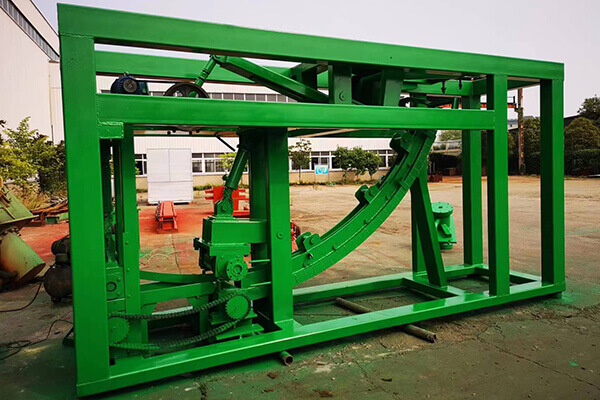Continuous caster, also called continuous casting machine, is the main equipment to solidified liquid steel to slabs, billets, blooms, and other structural shaped steel products. According to the data, about 70% of the liquid steel production is solidified in continuous caster.

The ladle containing the refined molten steel is transported to the turret. After the turret is rotated to the pouring position, the molten steel is poured into the tundish, and the tundish distributes the molten steel to each crystallizer through the nozzle. The crystallizer is one of the core equipment of the continuous casting machine, which makes the casting shape and quickly solidifies and crystallizes. The tension leveler and the crystallization vibration device works together to pull out the slab in the crystallizer. Then, cut it into a certain length of slab after cooling and electromagnetic stirring.
Tundish
It is the part to hold the molten steel. The molten steel heated to liquid state is firstly loaded into the ladle, and is transported by the crane to the top of the tundish, and the molten steel is poured into the tundish. The molten steel in the tundish enters the crystallizer through the pipeline.
Crystallizer
Crystallizer is the core component of continuous caster. Continuous casting production is to directly cast liquid steel into molded products. Crystallizer is the part that cools liquid steel out of solid billet. Composed of a metal shell, this shell that continuously delivers cooling water cools the molten steel in contact with it into a solid state. On the other hand, the shape of the mold also determines the shape of the continuously cast billet. If the cross section of the mold is rectangular, the continuously cast billet will be a thin slab; while the billet drawn from a square mold cross section will be It is a long strip, that is, a billet.
The part connected with the crystallizer is a vibrating mechanism, which drives the mold to vibrate together through continuous vibration during the production process, removes the gas in the liquid metal, and helps the steel billet condensed into a solid shell to be pulled out.
Dummy Bar
The dummy bar plays the role of pulling the first billet when the continuous casting machine starts to produce. After the molten steel has solidified in the mold, the dummy rod pulls the billet out from below. After the billet is pulled out, the first area it passes through is the secondary cooling channel, in which cooling water is sprayed to the billet to gradually cool the billet from the surface to the center, and enter the tension leveler along the roller table.
The function of the stretching and leveling machine is to straighten the continuous casting slab, so as to facilitate the next process.
Behind the tension leveler is the cutting machine. For the production of billets of different shapes, the cutting machines used are also different. Large-scale flying shears are mostly used for continuous casting of thin slabs, while flame cutting machines that advance synchronously with steel billets are mostly used for strip billets.
Pros
Cons

Compared with the traditional process of first casting and then rolling, continuous caster greatly shortens the production time and improves work efficiency. In the 1980s, continuous casting technology was gradually improved as a leading technology, and it was widely used in most steel plants around the world.
Please send us your request and we reply to you with in 24 hours.
Submit Request